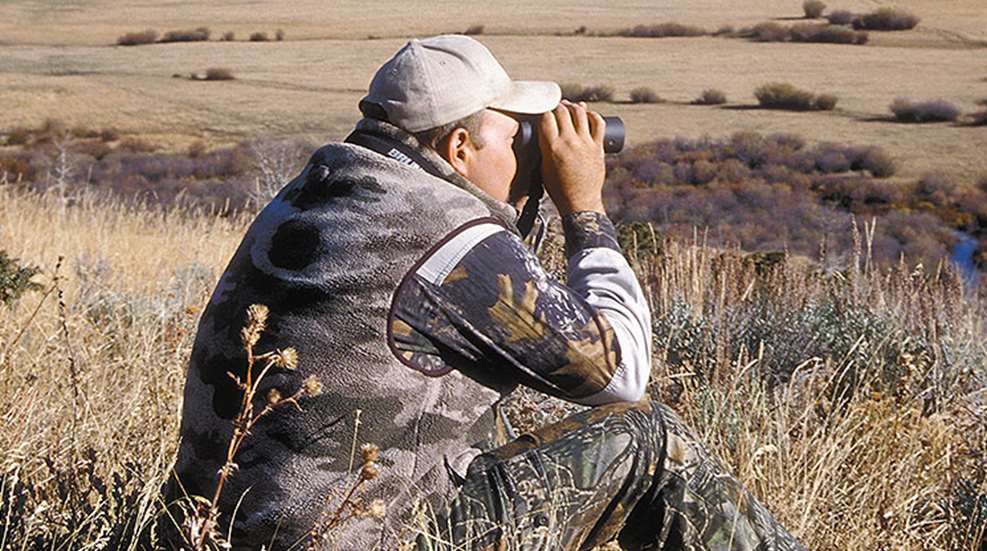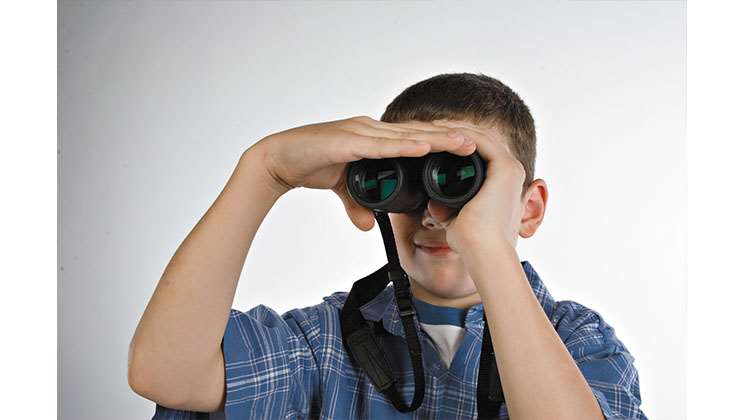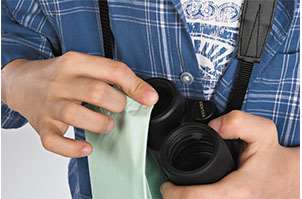
Binoculars are one of those tools you don’t want to be caught without in the field. Many hunters have stories about how they once forgot, broke or lost their binoculars and how frustrating it was.
Whether you’re hunting big game or bird watching in your backyard, you’ll want to have a pair with you. They let you focus in on the game you’re pursuing, add to overall safety and allow you to take a closer look at faraway destinations. So, find yourself a pair of good binoculars and use them—they’ll make your outdoor experiences a lot more enjoyable.
Here are a few things to remember if you’re considering a new pair of binoculars, and some handy tips for the next time you head afield.
The Basics
There are so many different kinds of binoculars out there it can seem very confusing. Basically there are two different types of binocular designs. Roof prism binoculars look as if the light goes through a single tube to your eye, while porro prism binoculars have a slight offset in the light’s path. Porro prisms are probably what you think of as the traditional binocular. They are usually less expensive, but also bigger and heavier. Either design can offer outstanding image quality.
When you look at a pair of binoculars you’ll also see a lot of different numbers. They may seem complicated, but it’s really very simple. Binocular power is usually described in a number, like 8X42. The numbers might be different on the pair you’re interested in, but they identify the same thing. The first number—in this case 8 followed by an X—means it magnifies what you’re looking at eight times. The second number—in this case 42—is the width, in millimeters, of the objective lenses.

What is an objective lens you might ask? They are the lenses you hold toward that deer or mountain you’re viewing. Their job is to capture the image and transmit it to your eyes. The larger the objective lenses, the more light they collect, which means they usually perform better in low light or dark forests.
As far as lens coatings are concerned, basically, the more the better, since they improve image quality and brightness.
Seeing Straight
No two eyes are created equal, even on the same person. Follow the manual’s instructions, and adjust the diopter until you see clearly through the binoculars with both eyes. Looking through an unadjusted set for any length of time is a good way to get a bad headache.
Shake It Up
Minimize binocular shake by firmly pressing them against your head, while making sure your arms are resting against your chest. If you allow your arms to stick out to your sides, you’re relying solely on muscle power to keep your image stable. By bringing your arms into rest on your chest, you’re using more of your skeleton to do the work. Don’t forget about other suitable stable rests…a tree trunk, fence post or even shooting sticks make great improvised rests. Some companies have added tripod mounts on their binoculars that you may find work well for you.
If you want to go high-tech there are new products that have added space-age circuitry to help stabilize the image when you’re hand holding the binocular. They work well, although they can be expensive and they do need batteries.
Test Drive
Be sure you go to an outdoor store and try out a few pairs before you buy. Work the focus controls and make sure they fit your face properly. Do you wear glasses? Then you want to be sure to test each pair of binoculars with your glasses on. When you find a pair you like, ask the salesperson to walk outside with you so you can see how they perform. It’s almost impossible to judge binoculars in the store—they’ll most likely all appear the same. Once you step outside though, you’ll begin to see the differences.
Cleaning

- Don’t use your shirt to clean your binoculars’ lenses, no matter how soft or recently washed it is. Doing so can scratch the lenses.
- Blow off any dirt on your lenses, using either your breath or a can of compressed air.
- With a soft brush, remove any accumulated dust and dirt from the lenses.
- A drop of lens cleaner is optional. Stay away from harsh window-cleaning products—they can damage lens coatings. With either lens-cleaning paper or a clean microfiber cloth, clean the lenses in a circular motion.







































